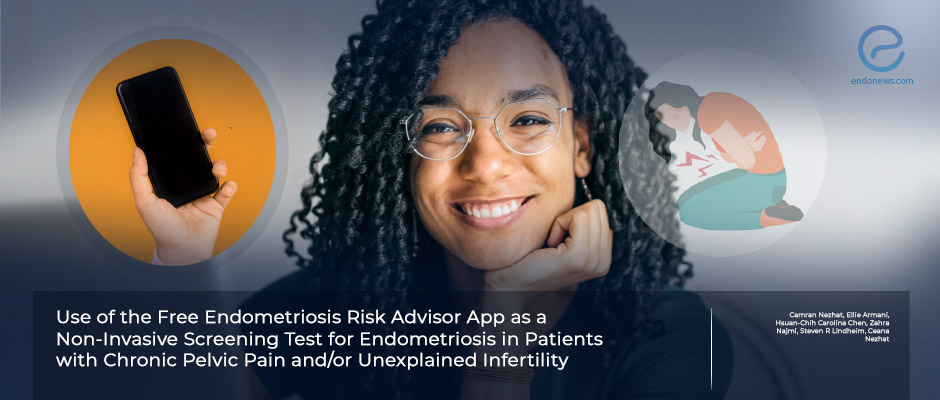A non-invasive test to determine the risk of endometriosis in women having chronic pelvic pain or unexplained infertility
Dec 13, 2023
Endometriosis as the underlying reason for chronic pelvic pain and/or unexplained infertility in women may be diagnosed using the Endometriosis Risk Advisor application.
Key Points
Highlights:
- The Endometriosis Risk Advisor (EndoRA) application may serve as a non-invasive, free, accessible, and valuable screening tool to determine endometriosis in high-risk women.
Importance:
- Women with chronic pelvic pain and/or unexplained infertility should be assessed for the presence of endometriosis for further management at experienced centers.
What’s done here?
- This retrospective cross-sectional study was conducted to evaluate the effectiveness of the EndoRA application as the screening test for endometriosis.
- A total of 293 women aged 17-49 who were referred for chronic pain and/or unexplained infertility, and had not previously been diagnosed with endometriosis were included.
- The patients were asked to download the EndoRA application on their phones and fill in the scores.
- An artificial intelligence-based algorithm was used to develop the EndoRA application including symptoms, personal and family history, and fertility issues.
- Experienced engineers, AI experts, and specialists played a role to develop and validate the application.
- All participants were evaluated by laparoscopic or robotic surgery by a highly skilled minimally invasive gynecological surgeon.
- Biopsies from any suspicious abdominal and pelvic lesions were histopathologically evaluated in all samples.
- The EndoRA application scores were compared with the gold standard histopathologic results to determine their sensitivity and specificity.
Key results:
- Endometriosis was confirmed in 276 patients (94.2%) by their pathology report.
- A high-risk EndoRA score was considered positive whereas a moderate or low EndoRA score was considered as negative.
- The sensitivity (the proportion of true positive cases identified by the EndoRA score) was 93.1% however. the specificity (the proportion of true negative cases identified by the EndoRA score) was 5.9%.
Limitations:
- The presence of selection bias could be accepted as the limitation of the study because the participants had been referred for surgery due to suspicion of endometriosis.
Lay Summary
Women having endometriosis may suffer from chronic pelvic pain and/or infertility, both of which diminish the quality of life in these women. Minimalization of the time between the onset of symptoms and diagnosis is essential to improve patients’ lives. However, there is a delay of approximately 4-11 years from the development of symptoms to diagnosis due to the absence of reliable and non-invasive screening test.
Dr.Nezhat et al., from the USA, published a retrospective cross-sectional study entitled “Use of the Free Endometriosis Risk Advisor App as a Non-Invasive Screening Test for Endometriosis in Patients with Chronic Pelvic Pain and/or Unexplained Infertility” in the Journal of Clinical Medicine. The authors sought to evaluate the clinical utility of the Endometriosis Risk Advisor (EndoRA) application for the determination of endometriosis risk.
The EndoRA application was developed using an artificial intelligence-based algorithm following a meticulous and comprehensive process. Women with suspicious symptoms of endometriosis would be able to determine their endometriosis risk with this free mobile application. The participants were asked to fill out the EndoRA application before surgery. Postoperatively, the EndoRA application scores were compared with the gold-standard histopathologic results to determine their sensitivity and specificity. The sensitivity (the proportion of true positive cases identified by the EndoRA score) was 93.1% while specificity (the proportion of true negative cases identified by the EndoRA score) was calculated to be 5.9%.
“The high sensitivity of EndoRA can be particularly valuable for clinicians to identify potential endometriosis in patients with chronic pelvic pain and/or unexplained infertility, which, in turn, can expedite referral to proper specialists for accurate diagnosis and appropriate treatment", added the authors.
Research Source: https://pubmed.ncbi.nlm.nih.gov/37629276/
endometriosis chronic pelvic pain unexplained infertility free Endometriosis Risk Advisor mobile application laparoscopic surgery robotic surgery

